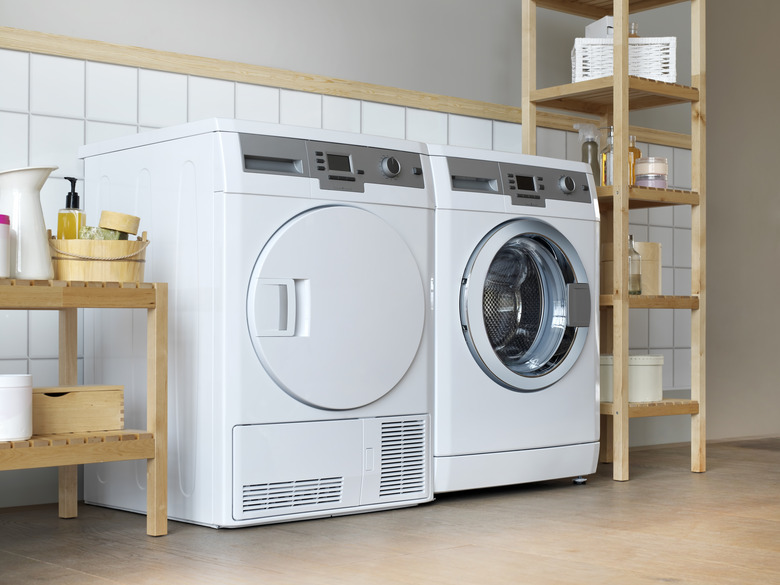What Is The Danger Of Running A Dryer Not Vented Outside?
Because they emit carbon monoxide, gas dryers absolutely must vent to the outside. Ideally, electric dryers also should vent to the outdoors. Unfortunately, structural challenges and other issues sometimes make venting a dryer inside of the home seem easier and more appealing, and some landlords may require it. There are, however, several compelling reasons to avoid doing so whenever you can.
It's the Law
It's the Law
Building codes vary from one place to another, but many places follow the International Residential Code established by the International Code Council. The IRC requires all dryer exhaust systems to be vented to the outside of a home. Depending on the rules where you live, venting your dryer inside could be illegal. If you do it anyway, you may face fines and have to change your setup.
Mold and Moisture Issues
Mold and Moisture Issues
A dryer that vents into an indoor space creates a pocket of warm, moisture-rich air. Mold spores looking for a new home love nothing more than pockets of warm, moisture-rich air. That's a problem. Venting your dryer into your home means greatly increasing the risk of exposing your family to toxic mold spores and aggravating mold allergies.
In addition to feeding mold, moist air trapped inside your home can lead to structural issues. Wood, drywall and other common building materials easily absorb moisture, and doing so can cause rot. Venting your dryer into your attic could shorten the lifespan of your roof, and venting it into a crawl space or basement can damage your floors and their support beams.
Earth, Wind and Fire
Earth, Wind and Fire
Earth isn't really an issue when venting a dryer inside, but wind and fire certainly are. Dry and fluffy, lint is highly flammable. Dryers do have lint traps, but they never catch all of the lint. Some is always expelled with the dryer's exhaust.
If you vent your dryer inside, lint particles will accumulate in the venting area. After that, one spark from a faulty electrical wire is all it takes to set the lint on fire. To try and contain the dryer's lint output, some people vent their dryers into containers of water. This does reduce the amount of lint flying around, but it also adds to the moisture problem.
Speaking of lint flying around, take note that indoor dryer venting reduces the air quality in your home. Dryer lint certainly isn't toxic, but it does come out of the dryer in very small particles. If inhaled, these lint particles can aggravate asthma and other breathing problems in some people.
A Proper Dryer Exhaust Vent
A Proper Dryer Exhaust Vent
To vent your dryer properly, you truly do need to send the exhaust outside. To get it there, use a smooth, rigid metal vent pipe. The corrugated plastic dryer vent hose commonly seen on dryer vents creates a fire hazard by trapping lint in their ridges. They also sag, further restricting airflow and trapping more and more lint over time.
Although rigid pipe is best, you may have to use flexible pipe to get around corners. You can do so, but keep lengths of flexible pipe as short as you can while making your turns as gradual as possible to avoid trapping lint in them. Always use the venting pipe width recommended by your dryer's manufacturer and provide the ducting with proper support every 12 feet.
When You Have to Make Do
When You Have to Make Do
If you live in an area where indoor dryer venting is legal, and you absolutely must do so, there are some steps you can take to minimize the risks. Run a temporary exhaust hose from the dryer and out a window if you can.
If you can't, open as many doors and windows as you can to promote airflow in the venting area. Vent your dryer to an area you can easily access and terminate the vent at a bucket of water to contain as much lint as you can. Empty your lint bucket between each laundry load and refill it with fresh water. Dry the area thoroughly if you notice any moisture or condensation.
